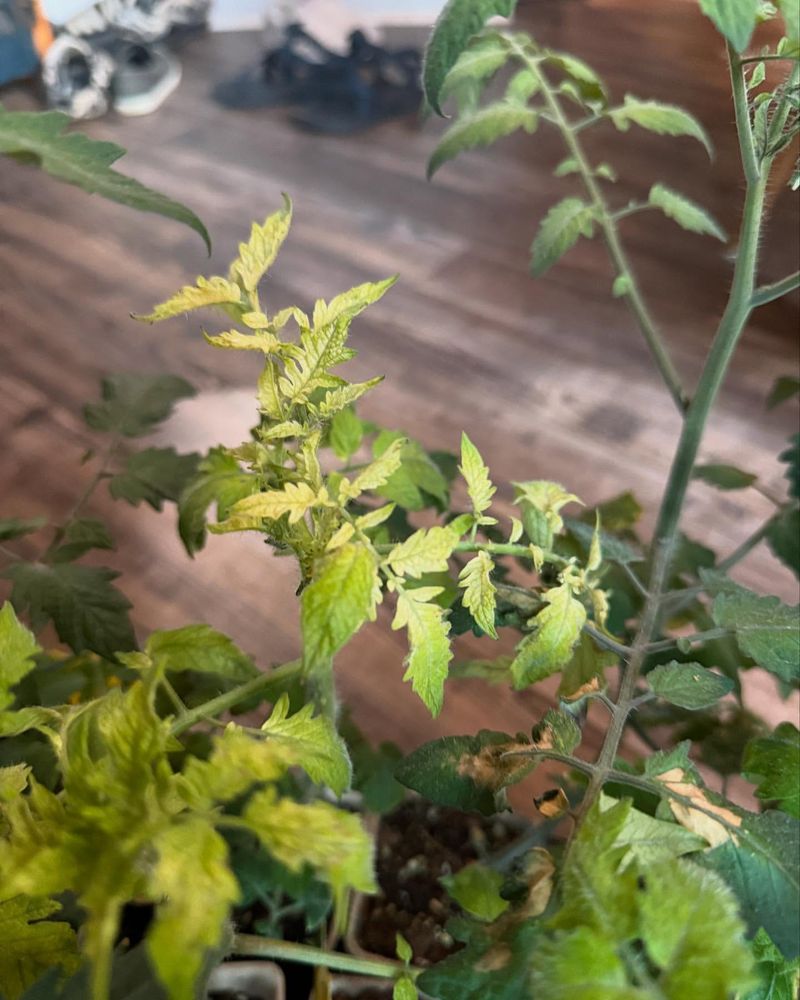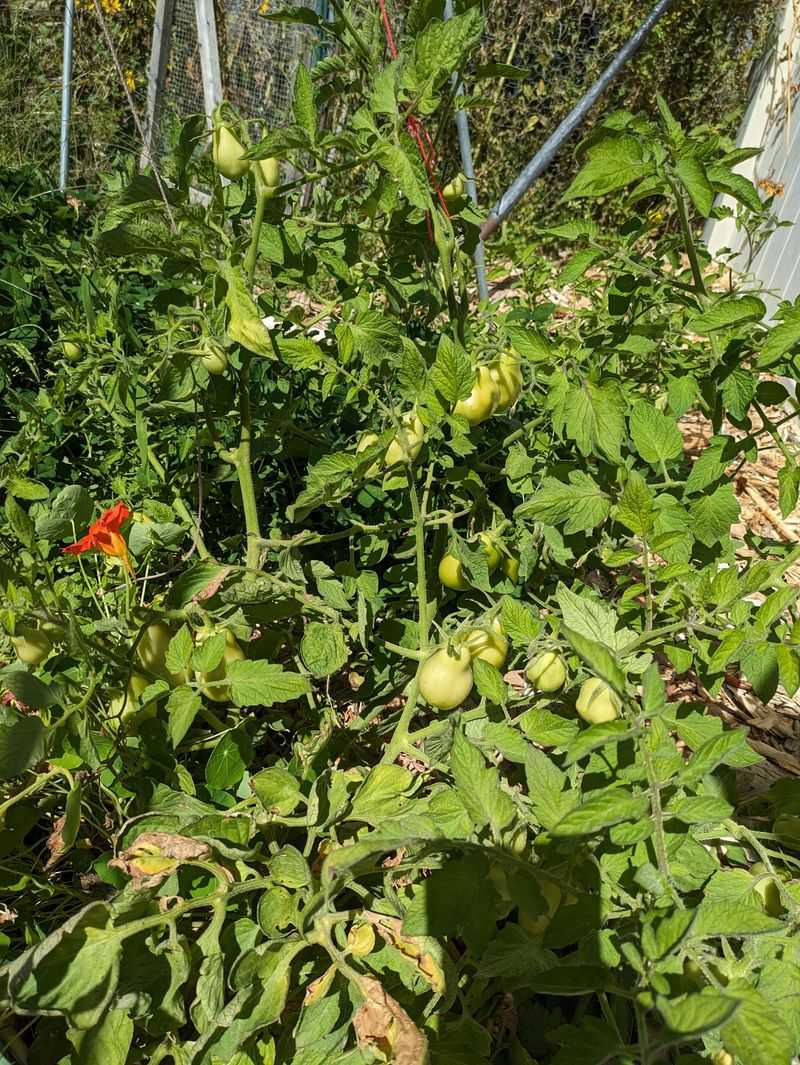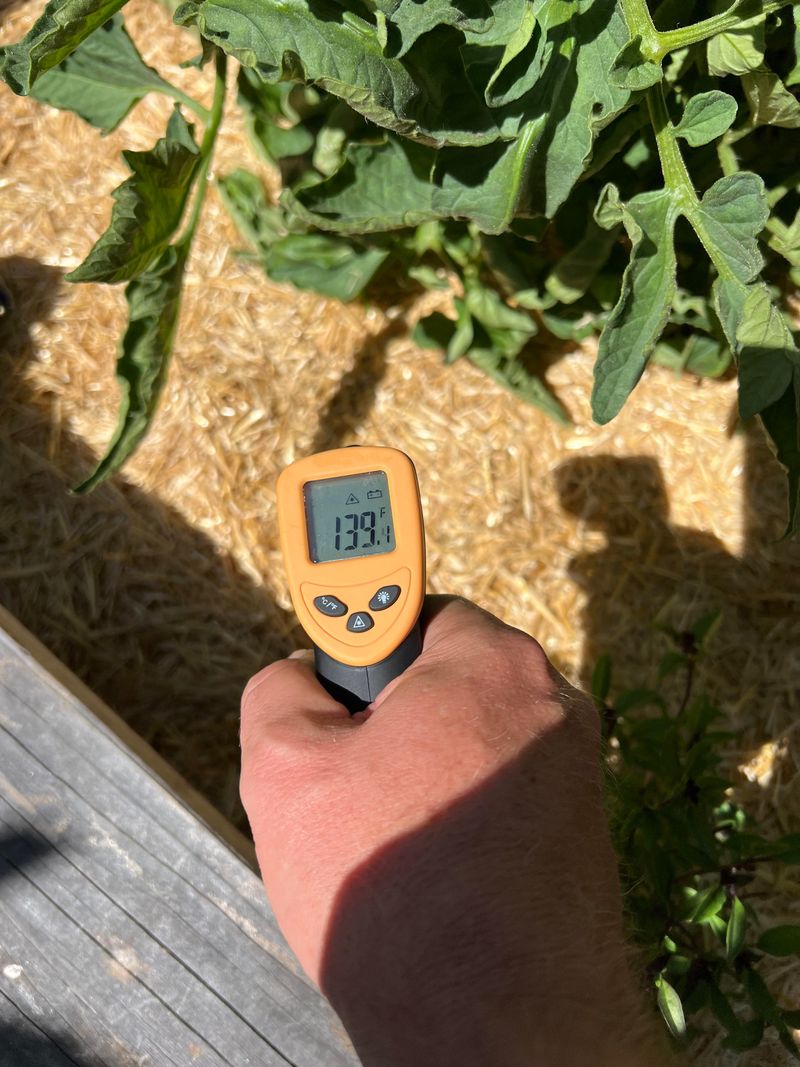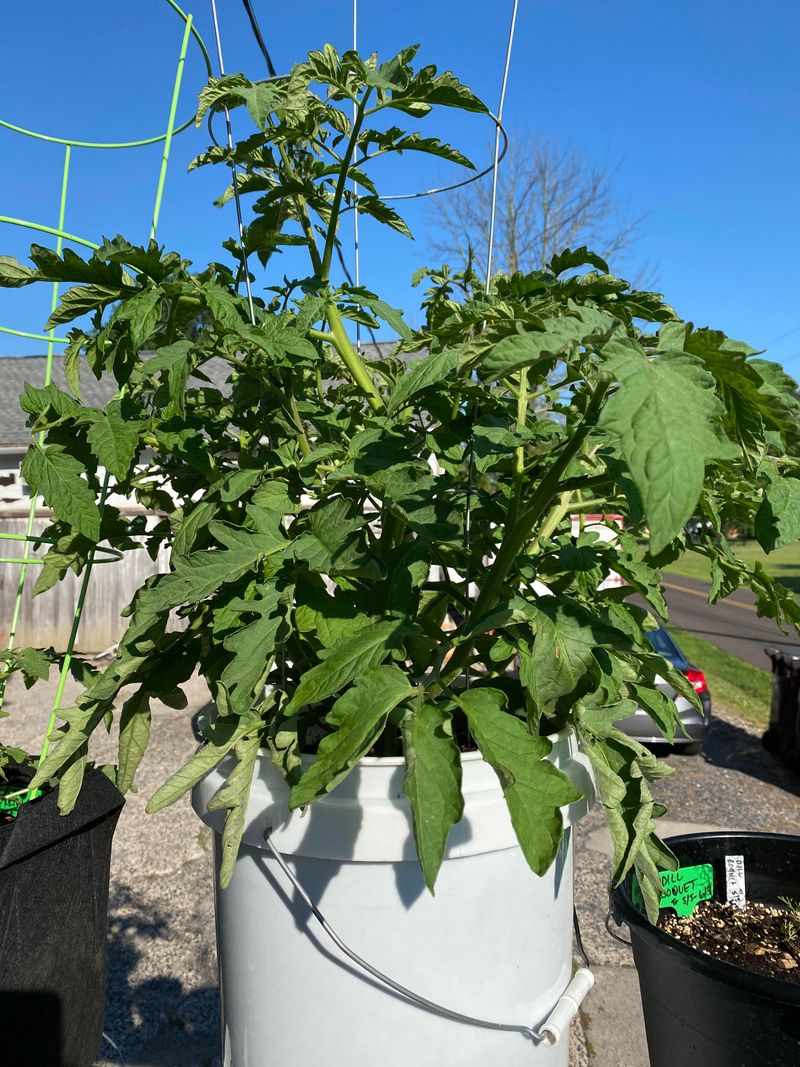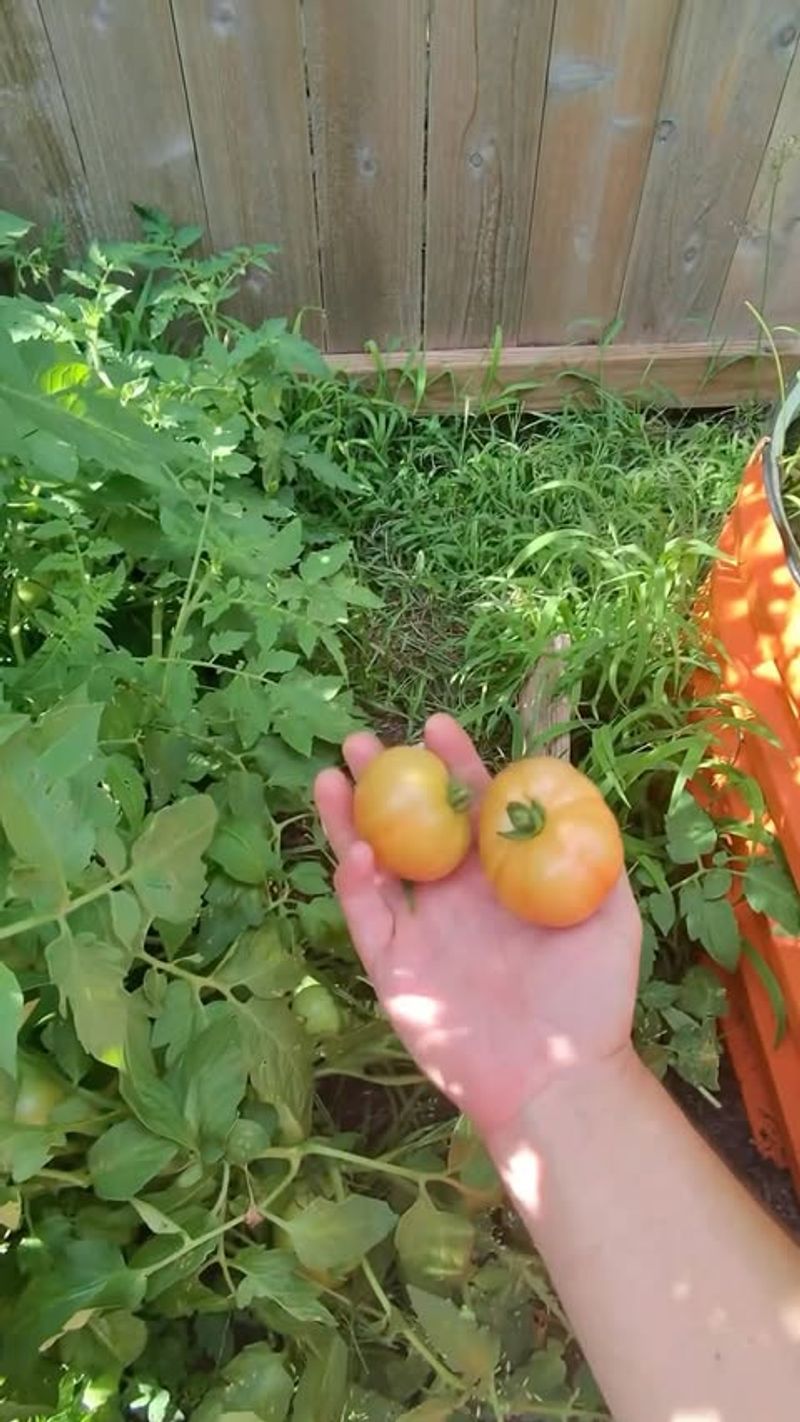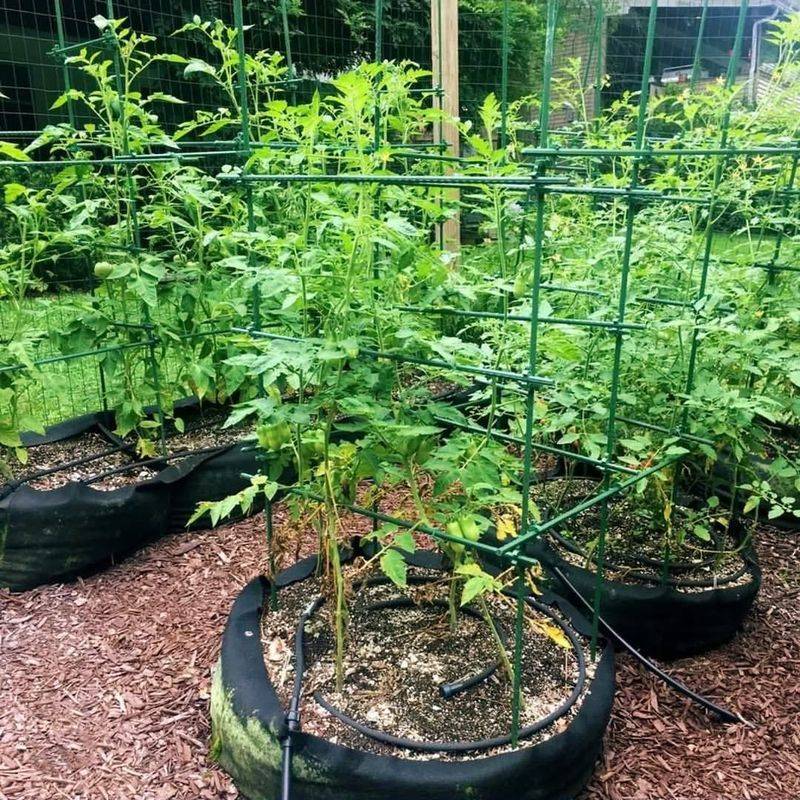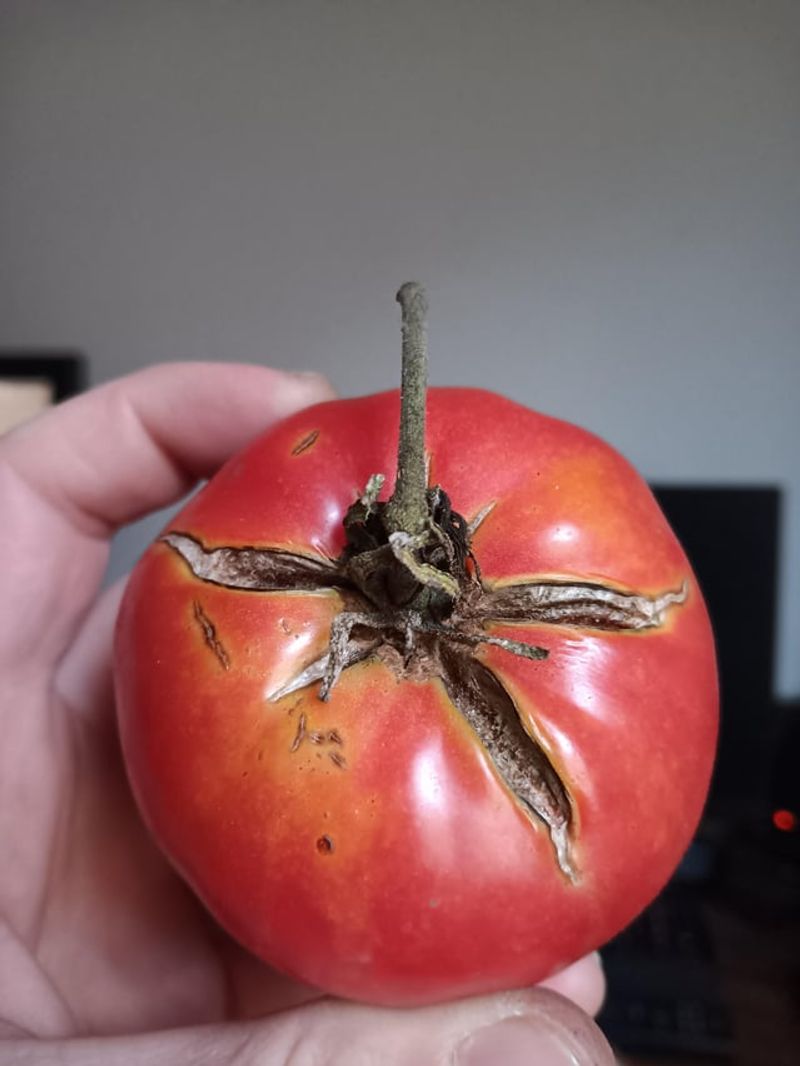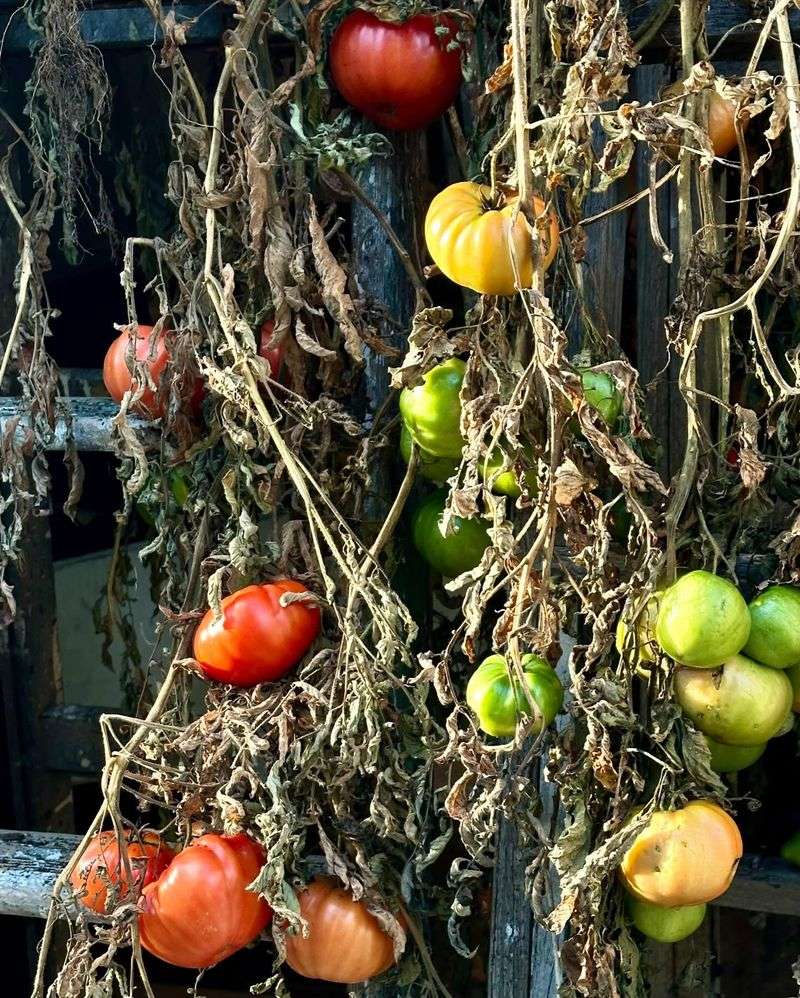If your tomatoes are stuck green and stubborn, there’s probably something you’re doing that’s holding them back. I didn’t realize how much little habits—like overwatering or planting too close—were messing with mine.
Once I cut a few things out, my tomatoes finally started turning that perfect red. It’s less about doing more and more about doing it right.
Skip these common mistakes and give your tomatoes a real chance to shine.
1. Overwatering Your Plants
Too much water dilutes the flavor and delays ripening in tomato plants. The roots need to breathe occasionally, and constant moisture creates stress.
Find a balance by allowing the soil to dry slightly between waterings. Your plants will develop stronger root systems and produce sweeter, faster-ripening fruit as a result.
2. Applying Too Much Nitrogen
Excessive nitrogen fertilizer encourages lush green growth at the expense of fruit production. Plants become bushy giants with few tomatoes that take forever to ripen.
Switch to phosphorus-rich fertilizers once flowering begins. This nutrient shift tells your plants to focus energy on fruit development rather than making more leaves.
3. Ignoring Temperature Needs
Tomatoes have specific temperature requirements for ripening. When temperatures stay above 85°F or below 50°F for extended periods, the ripening process stalls completely.
Consider using shade cloth during heat waves or covering plants during cool nights. Creating the right temperature environment can speed up ripening by several days.
4. Crowding Your Tomatoes
Planting tomatoes too close together restricts airflow and creates competition for nutrients. Crowded plants develop diseases faster and produce fewer ripe fruits.
Space plants at least 24 inches apart. The improved circulation reduces humidity around the leaves and allows each plant to receive adequate sunlight for proper ripening.
5. Skipping Pruning Sessions
Unpruned tomato plants waste energy on excess foliage instead of ripening fruit. Those dense leaf canopies also block sunlight from reaching developing tomatoes.
Remove suckers and lower leaves regularly. Your pruned plants will direct more resources toward fruit development, resulting in faster and more uniform ripening.
6. Harvesting Too Early
Picking tomatoes before they show any color change prevents them from developing full flavor. Many gardeners harvest prematurely out of excitement or fear of pests.
Wait until fruits show at least a blush of color before picking. Once tomatoes reach the “breaker stage” with 30% color, they can finish ripening indoors with full flavor development.
7. Neglecting Soil pH
Tomatoes struggle to absorb nutrients when soil pH is incorrect. This nutrient deficiency often manifests as slow-ripening fruit and discolored leaves.
Maintain soil pH between 6.0 and 6.8 for optimal nutrient uptake. A simple soil test kit can help you identify and correct pH issues before they affect your harvest.
8. Forgetting Support Structures
Unsupported tomato plants often have fruits touching the ground, leading to rot and pest damage before ripening occurs. Sprawling growth also reduces sun exposure to developing fruits.
Install cages or stakes early in the season. Properly supported plants have better air circulation and sun exposure, creating ideal conditions for tomatoes to ripen evenly.
9. Inconsistent Watering Habits
Fluctuating between drought and flood stresses tomato plants, causing growth checks and ripening delays. The common cracking on almost-ripe fruits often results from irregular watering.
Establish a consistent watering schedule based on weather conditions. Mulching around plants helps maintain even soil moisture, encouraging steady ripening without interruption.
10. Leaving Ripe Fruit Hanging
Allowing fully ripe tomatoes to remain on the plant signals that reproduction is complete. The plant reduces energy flow to remaining fruits, slowing their ripening process.
Harvest ripe tomatoes promptly to encourage the plant to continue ripening others. Regular picking sends the message that more seeds need to mature, keeping the ripening cycle active.


